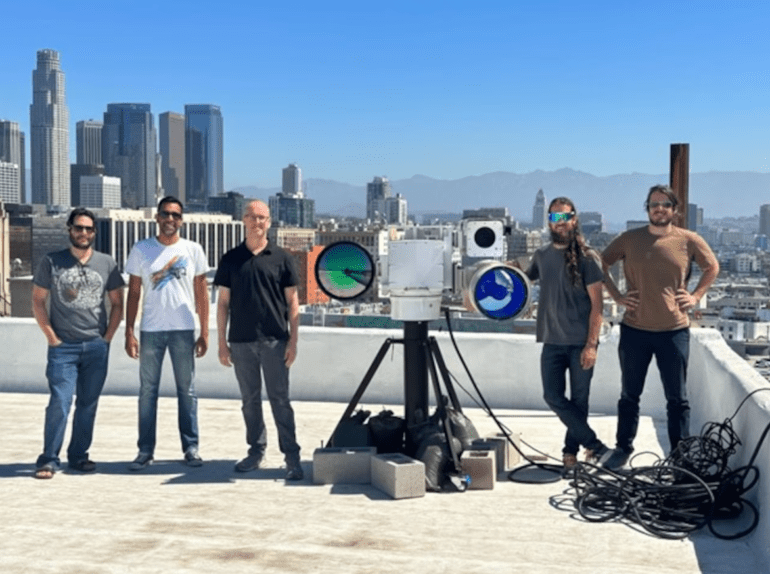TL;DR:
- An advanced AI-enabled airspace monitoring system is set to enhance security in Washington, D.C.
- The system boasts a tenfold increase in performance compared to the outdated 9/11-era system it replaces.
- Collaboration between Battle Control Systems and Defense Innovation Unit expedited rapid prototyping and procurement.
- Teleidoscope, a non-traditional vendor, secured a $100 million contract for system production.
- The system leverages AI, machine learning, and augmented reality for improved surveillance and identification.
- Upgraded cameras and lasers enhance air defense, positively identifying and warning aircraft.
- Automation extends to full-motion video feeds, enhancing remotely piloted aircraft tracking capabilities.
- The technology has broad national defense applicability against various threats, including drones and missiles.
- Rapid deployment showcases improved decision-making capabilities for national defense.
- The system secures the Washington, D.C. metropolitan area, crucial for protecting millions of people and critical installations.
Main AI News:
Advancements in artificial intelligence are set to redefine the protection of the nation’s capital, with a cutting-edge airspace monitoring system poised to revolutionize defense strategies. The system, powered by artificial intelligence, is not only a testament to innovation but also promises scalability across various Defense Department and U.S. government facilities.
Replacing an outdated system dating back to the aftermath of the 9/11 attacks, this upgraded visual recognition, identification, and warning framework boasts an astounding tenfold increase in performance capability. Air Force Lt. Col. Kurtis Engelson, the visionary leader behind the Battle Control Systems, which spearheads the National Capital Region-Integrated Air Defense System program, emphasizes the transformative potential. Engelson highlights the collaboration with the Defense Innovation Unit, where the commercial solutions solicitation process was harnessed for rapid prototyping, opening a path for swift Air Force procurement of successful prototypes.
Engelson elaborates, “We’re talking about an advanced surveillance, identification, and tracking system meticulously designed to safeguard the controlled airspace encircling Washington, D.C. This is an integral component of the National Capital Region-Integrated Air Defense System.”
In a testament to the effectiveness of this innovation, a remarkable 18-month prototype demonstration culminated in April. The outcome: Teleidoscope, an unconventional vendor new to the Defense Department scene, secured a staggering $100 million ceiling production contract. As orders for the system are already underway, the ambitious endeavor is slated to commence its fielding operations this very year, a remarkable testament to the speed of execution.
Initial funding, the backbone of this transformation, was generously provided by the U.S. Air Force. However, the Accelerate the Procurement and Fielding of Innovative Technologies program played a pivotal role by supplementing procurement funding. This program is inherently committed to ushering innovative technologies beyond the prototype stage, ensuring they successfully transition into production.
Steering towards the specifics, the newly minted system embraces the latest advancements in machine learning and augmented reality. This amalgamation finds its application in surveillance cameras, enriching the capabilities of air battle managers in identifying airborne entities within the NCR airspace.
Further fortifying the system is the concerted effort to elevate cameras and eye-safe lasers, instrumental in tracking and visually cautioning aircraft straying from designated flight paths. These enhancements exponentially amplify air defense operators’ ability to discern aircraft and project warning lasers across significantly extended distances. This Laser Visual Warning System is an instant channel of communication with pilots, bypassing radio malfunctions and ensuring rapid response protocols.
Automation takes center stage, showcasing its relevance across full-motion video feeds, independent of their origin. This introduction unlocks the potential to augment remotely piloted aircraft video feed tracking capabilities. Notably, the software’s versatility is underscored as it can operate on a spectrum of devices, whether edge or cloud-based, facilitating full-motion video feeds.
The ripple effect of this innovation spans the realm of national defense, proving pivotal in countering asymmetrical and near-peer threats, including unmanned aerial systems and cruise missiles. Highlighting the program’s comprehensive impact, Nick Ksiazek, the DIU program manager, reiterates its applicability across various defense services.
Heidi Shyu, the undersecretary of defense for research and engineering, extols the rapidity and efficacy of deploying this technology within a condensed timeframe. Such achievements are emblematic of her office’s unwavering commitment to driving progress. “Operational needs can now seamlessly metamorphose into tangible national defense solutions. The benefits go beyond fiscal savings, with decision-making superiority that has the potential to save lives,” she affirms.
The metropolitan expanse of Washington, D.C., a hub for myriad activities, houses over 6 million people, critical military bases, intelligence agencies, and federal, state, and local governments. Amidst bustling commercial and military air traffic, the sky plays host to an increasing number of privately owned drones. In this intricate landscape, the safeguarding of the metro area from potential aerial threats falls under the purview of the National Capital Region-Integrated Air Defense System, a pivotal component within the North American Aerospace Defense Command.
Conclusion:
The introduction of an AI-powered airspace monitoring system heralds a new era in security solutions. This innovation not only revolutionizes airspace protection in Washington, D.C., but also sets a precedent for the integration of AI and advanced technologies in defense. The successful collaboration between military and innovative vendors demonstrates the market’s capacity to swiftly adapt and incorporate cutting-edge solutions, with far-reaching implications for future defense systems and security technology markets.

